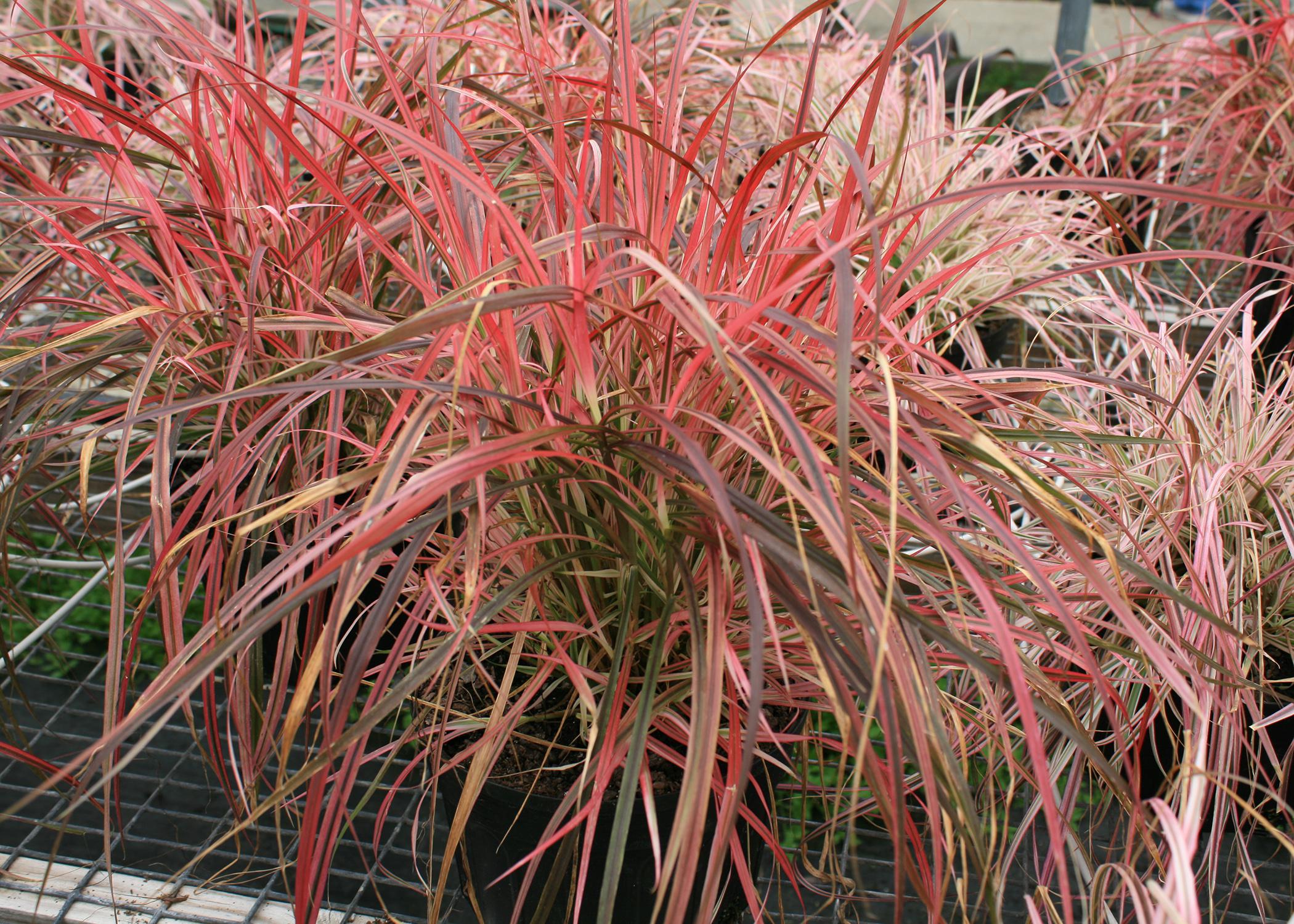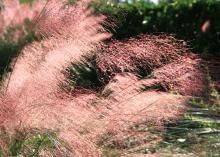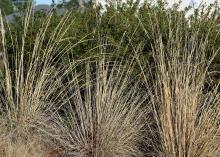Information Possibly Outdated
The information presented on this page was originally released on December 14, 2015. It may not be outdated, but please search our site for more current information. If you plan to quote or reference this information in a publication, please check with the Extension specialist or author before proceeding.
Ornamental grasses give four seasons of interest
Ornamental grasses are reliable warm-season performers that keep on giving, even in winter landscapes. Their color and interesting texture make them great choices for any garden.
A couple of good ornamental grasses that I like are Gulf muhly grass and pampas grass.
Gulf muhly grass is a native plant that really performs in the winter. It flowers in billowy masses that resemble pink clouds in the landscape. The color will hold as long as there isn’t a hard freeze. Even after freezing temperatures, the flower heads keep their airy shape.
Pampas grass can command attention in the landscape. This perennial grass has wiry, serrated leaves and is definitely not shy. Flower heads normally shoot up to 10 feet tall, and the arching foliage is a variable green color. The flower heads are extremely dense, and the stalks are held in tight groupings that persist through the winter for landscape interest.
If you have a smaller area, then plant the dwarf Pumila selection. The dwarf description is relative, as this plant grows to 6 feet tall.
Gardeners interested in something with a little more pizazz should consider Pennisetum, which offers many different varieties. Rubrum has upright, arching, burgundy-tinted foliage that has the classic, true fountain grass habit. This plant produces waves of gracefully nodding, soft-purple plumes during the summer.
Fireworks has pink and white variegation. It has a strong upright, arching habit that prefers full sun and will provide strong fall interest. Sky Rocket has beautifully variegated green leaves with white-striped margins that form beautiful, arching clumps.
Pennisetum must be treated as an annual everywhere except right along the coast. These grasses grow up to 3 feet tall and exhibit a wispy, flowing grace of color and texture.
Home gardeners are showing more interest in planting ornamental grasses in their spring and summer landscapes because of the variety of colors and textures they add to gardens and landscapes.
But looking out at the landscape this time of year often leads to the question, “How do I care for these plants in the winter?”
The dried leaves, stalks and seed heads provide visual winter interest for us and winter structure and habitat for birds and other wildlife. A common question I get during the late fall and early winter is when to cut ornamental grass back. I always tell people to just leave it alone for now. There will come a day in later winter when you just need to get out of the house and do something in the yard. That’s the day to cut the grasses back.
Cut them down to about 6 inches from the ground to remove last year’s foliage and make room for this year’s new growth.
Now is also a good time to divide the plants, as most ornamental grasses spread by clumping. Use a sharp shovel or spade and dig the entire clump. Chop it into three or four pieces; there’s no need to be dainty. Replant the new pieces, and give some away to neighbors.
I like ornamental grasses in the landscape because they provide four seasons of garden interest. You should like them, too, for the same reason.










